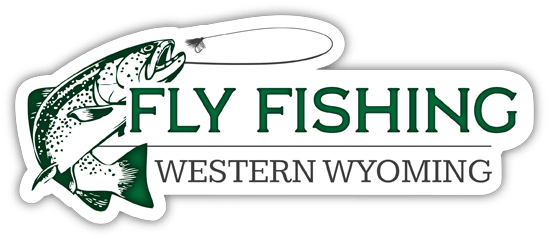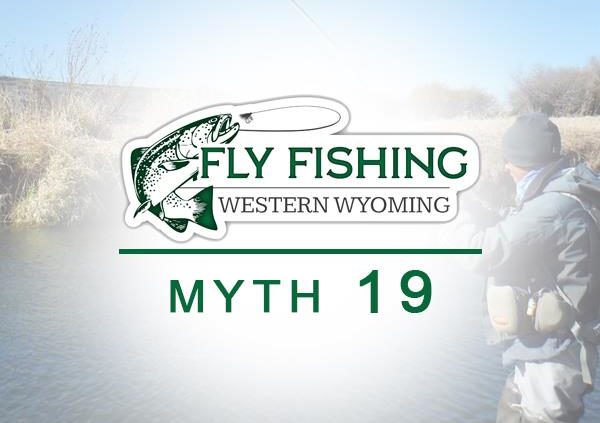Common Fly Myth Comment
Common Fly Myth Comment
While there are many times a specific fly of a certain size, color, and design is the “best” fly, this isn’t always true. In Naples, Florida, most people believe a back and purple fly is the best for redfish, tarpon, and snook. I have my doubts. The fly catches lots of fish because it is a local favorite and is fished more than any other color. If you fish a fly 90% of the time, you’ll catch more fish on it than on any other fly! Pretty simple math.
When I worked in a fly shop, I would have an angler walk in and say, “ I need a size 12 Royal Wulff – it’s the only fly that is working in the narrows of the Salt River.” An hour later, an angler would show up and say, “I need a size 10 orange stimulator – it’s the only fly working in the narrows of the Salt River.” You get the idea!
In saltwater and in non-hatch situations in trout waters, it is often true that fish will eat anything that looks alive. The same is true for bass and other species. I guide over 200 people a year and fish with dozens more in salt water, and I have often witnessed three different people catch fish on three different flies in the same situation.
Even when a very specific food is being consumed, the success of the angler is often much more dependent on the presentation than the fly itself. When the PMD is hatching on the Hams Fork in Wyoming, I’ve seen at least ten or twelve different patterns work. They may all be PMD patterns, but some are nymphs, some are emergers, some are stillborns, etc.. Most of the time, people fail to catch fish because their presentation is lacking – or they aren’t fishing water where there are fish. That is a much more common scenario than having the wrong fly.
As an example, I use pretty much the same dozen or so flies on the Hams and the same half dozen or so flies in the flats when saltwater fishing. There are not too many times when I feel the need to expand my fly selection. On the Smiths Fork, I have a client that uses an Orange Stimulator, size 10, every time he fishes it he catches lots of fish. My go-to fly is the Tarantula – 80% of the time.
Here is a selection of flies that will catch fish in 90% of Trout Rivers:
- Pheasant Tail Nymph (8-24)
- Parachute Adams (10-26)
- Zebra Midge (18-26)
- Gold Ribbed Hare’s Ear (18-24)
- Elk Hair Caddis – Dark (12-24)
- Elk Hair Caddis – Light (12-24)
- Black Ant (14-24)
- Black Beatle (14-24)
- Orange Stimulator (8-18)
- Some kind of big, ugly rubber legged dry (4-10)
- White Woolly Bugger (6-10)
- Black Woolly Bugger (6-10)
- Griffith’s Gnat (16-24)
There are very few situations where one of those flies won’t work. Very specific hatches are the exception.
SALTWATER
- Clouser Minnow – chartreuse over white (2/0 to 8)
- Clouser Minnow – olive over white (2/0 to 8)
- Clouser Minnow – brown over light tan (2/0 to 4)
- Some type of impressionistic crab pattern with lots of movement light tan and olive/brown (2-8)
- Deceiver – olive over white (2/0 to 6)
- Seducer – white, brown, tan (2/0 to 6)
If one of these doesn’t work, you might be in for a long day. Again, my opinion only and I’m sure I’ve left off some of your “go to”, “must have” flies. One of the things that makes fly fishing so much fun is the arguments we have about flies. And what fun would it be if we carried only 20 different flies?? I for one, have literally hundreds of fly patterns, but it seems I always pull out pretty much the same ones. Still, once in awhile, I need the others, and besides, I love looking at my fly boxes!!
Spring is here and we still have an above average snowpack in the Wyoming Range. Given a normal late Spring and Summer weather, we should have a great summer of adequate water.
Before I forget, I have a number of YouTube videos that you may access by going to www.youtube.com/channel/UCSrBeg4fBy_us6Hq7JY3CmA . There are lots of casting videos you may be interested in. Many are specifically designed for the IFFF casting instructor certification program, but you will find them helpful nonetheless. The better you cast, the more fish you catch – usually.




Leave a Reply
Want to join the discussion?Feel free to contribute!